101 Airline Luggage Size Guidelines 2025

Choosing the right luggage size is a crucial aspect of travel planning that can significantly impact your journey’s comfort, convenience, and overall experience.
Whether embarking on a weekend getaway or an extended vacation, the size of your luggage determines how much you can pack and how smoothly you can navigate airports, train stations, and other travel hubs. Understanding the importance of luggage size allows travelers to make informed decisions that optimize their packing efficiency while minimizing potential hassles during transit.
In this article, we’ll delve into why luggage size matters, the implications of oversized or undersized bags, and practical tips for selecting the perfect suitcase or backpack for your next adventure. By prioritizing luggage size considerations, travelers can streamline their packing process, avoid excess baggage fees, and enjoy a stress-free travel experience from start to finish.
Please find our ultimate guide and technic for packing your backpack AND our best packing list in order not to forget anything
Don’t forget your travel Insurance !
Need to learn basic stretching for your long travel, international flight backpacking journey or camping trip ? Or for your Hike ? Check my full guide of the best travel stretches HERE
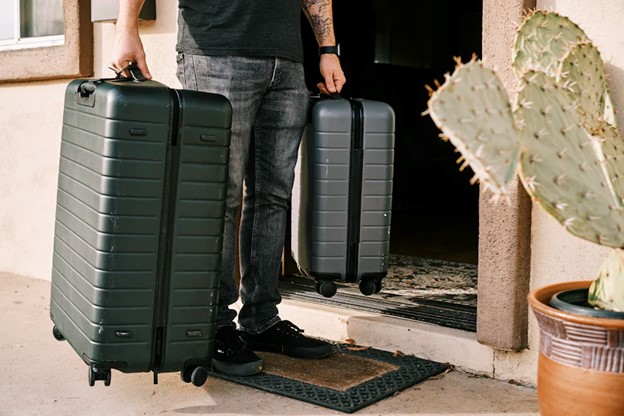
TABLE OF CONTENTS :
– Guide and advice for airline luggage size while travelling
– Which luggage to take while travelling
– Maximal weight authorised by airlines
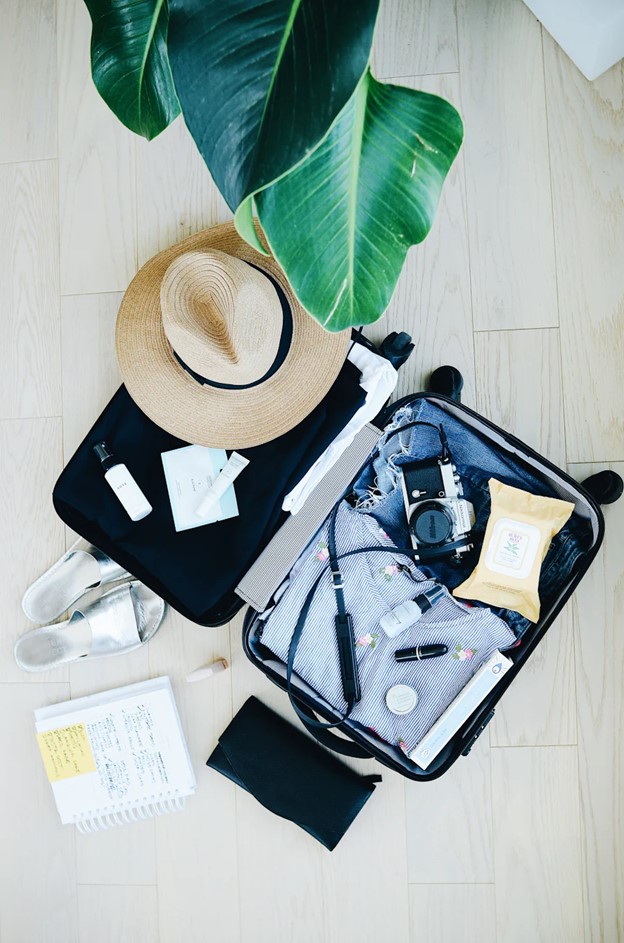
Guide and advice for Airline luggage size while traveling
Need some travel inspiration ? Check our travelling quotes HERE
1. Know Your Travel Needs:
– Consider the duration and purpose of your trip to determine how much luggage space you’ll require.
A small carry-on or weekend bag may suffice for short trips, while longer trips necessitate a giant suitcase or backpack.
2. Check Airline Restrictions:
– Before choosing luggage, familiarize yourself with the size and weight restrictions airlines impose.
– Different airlines have varying policies regarding carry-on luggage and checked baggage dimensions, so ensure your luggage complies with these rules to avoid additional fees or hassles at the airport.
3. Choose Versatile Options:
– Opt for versatile luggage, such as expandable suitcases or modular backpacks with adjustable compartments.
– Versatile luggage allows you to adapt to changing travel needs and pack efficiently for different trips.
4. Consider Mobility:
– Evaluate the mobility features of your luggage, such as wheels, handles, and straps.
– Choose luggage with sturdy wheels and ergonomic handles for easy maneuverability, especially when navigating airports, train stations, and crowded streets.
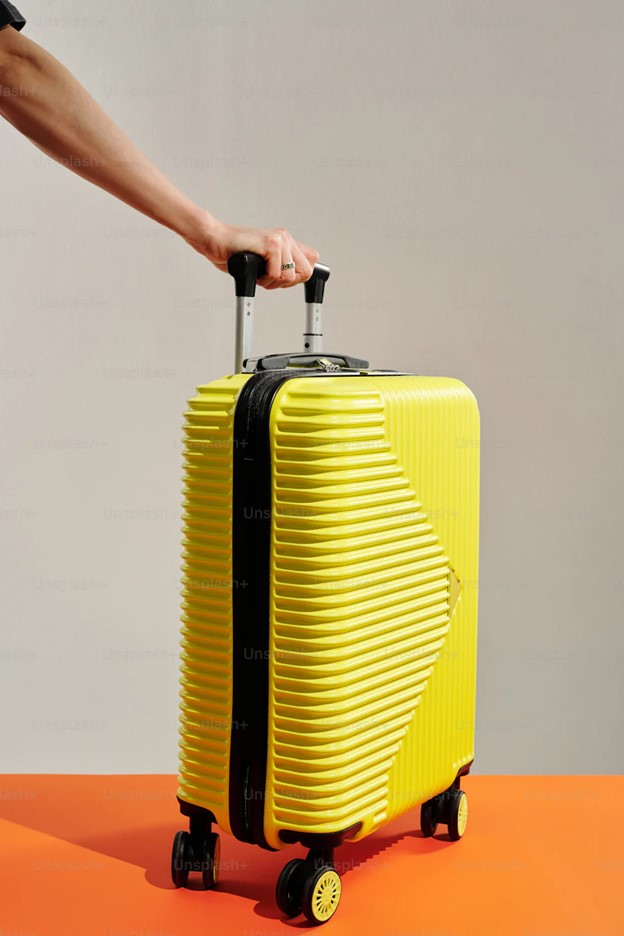
5. Prioritize Durability:
– Invest in high-quality luggage made from durable materials like polycarbonate, ballistic nylon, or reinforced fabrics.
– Durable luggage withstands the rigors of travel, protecting your belongings and providing peace of mind throughout your journey.
6. Pack Light and Smart:
– Adopt a minimalist approach to packing by prioritizing essential items and versatile clothing pieces.
– Utilize packing cubes, compression bags, and travel organizers to maximize size space and keep your belongings organized within your luggage.
Wondering is your can bring your vaping device ? Check our article HERE
7. Check Weight Distribution:
– Distribute weight limit evenly within your luggage to maintain balance and prevent strain on handles and wheels.
– Place heavier items at the bottom and lighter items on top to ensure stability and ease of handling.
Wondering about backpacking base weight ? Check our guide HERE
8. Consider Carry-On Size:
– If carrying carry-on luggage, adhere to airline size restrictions to avoid gate-checking or additional fees.
– Choose carry-on luggage that fits within overhead bins or under the seat in front of you, ensuring a hassle-free boarding process.
9. Account for Souvenirs and Shopping:
– Leave room in your luggage for souvenirs and shopping items acquired during your trip.
– Consider packing a collapsible duffel bag or extra foldable tote for additional storage space on your return journey.
10. Plan for Specialized Activities:
– Pack appropriate gear and equipment according to your luggage size and weight limitations if engaging in specialized activities like hiking, skiing, or diving.
– Consider renting bulky or specialized equipment at your destination to minimize luggage bulk and weight.
Wondering how to pack a tent on your backpack ? Check our guide here
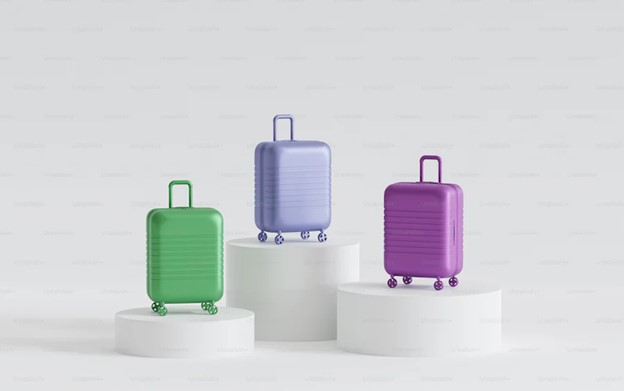
⚠️ Don’t forget our complete guides about many countries in the world ( 5 continents )
✅ What to do cities by cities
✅ Trekking, Yoga, adventure, surf and the best activities
✅ Best food and best cafés
☝🏻 And way more about the world
🔍 Just type the topic / country you choose in the search bar for all our articles
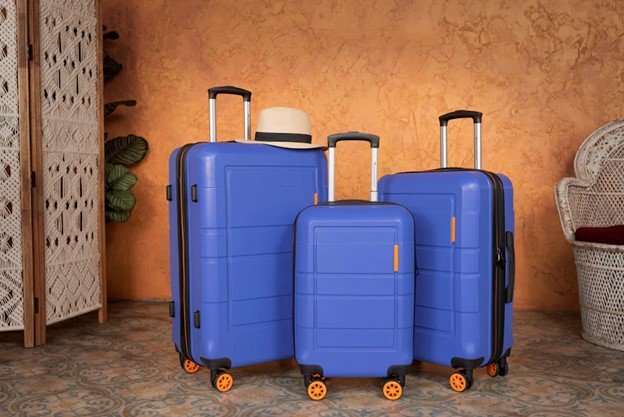
Which luggage to take while traveling
1. Carry-On Luggage (20-22 inches): 51 to 56 cm
– Carry-on luggage is ideal for short trips or if you prefer to travel light.
– Airlines typically allow carry-on bags with dimensions around 22 x 14 x 9 inches, but it’s essential to check specific airline regulations as they may vary.
– Opting for a carry-on size ensures convenience, as you can keep your belongings with you throughout the journey, bypassing baggage claim and potential fees for checked luggage.
– Look for compact yet spacious carry-on options with organizational features to maximize packing efficiency.
2. Medium Checked Luggage (24-26 inches): 61 to 66 cm
– Medium checked luggage is suitable for longer trips or when you need to pack more clothing and essentials.
– These bags typically measure around 24 to 26 inches in height, providing ample space for extended stays without exceeding airline weight limits.
– Choose medium checked luggage with durable construction and practical features like expandable compartments and smooth-rolling wheels for ease of transport.
– Remember to verify airline size restrictions to ensure your luggage complies with their policies to avoid additional fees or complications at the airport.

3. Large Checked Luggage (28-32 inches): 71 to 82 cm
– Large checked luggage is suitable for extended trips, family vacations, or when traveling with bulky items.
– These bags typically range from 28 to 32 inches in height, offering generous packing capacity for multiple travelers or extended stays.
– While larger luggage provides ample space, it’s crucial to consider weight restrictions imposed by airlines and transportation methods to avoid excess baggage fees.
– Opt for large checked luggage with robust construction, reinforced corners, and TSA-approved locks for enhanced durability and security during transit.
4. Specialty Luggage (Carry-On Backpacks, Duffel Bags, etc.):
– In addition to traditional suitcases, specialty luggage such as carry-on backpacks or duffel bags may be suitable for specific travel needs.
– Carry-on backpacks offer hands-free convenience and are ideal for outdoor adventures or urban exploration.
– Duffel bags provide flexibility in packing irregularly shaped items or when luggage space is limited.
– Ensure specialty luggage meets size requirements and provides sufficient organization and durability for your intended use.
Travelling to Africa ? Check our guide for Malaria HERE and advices for malaria pills
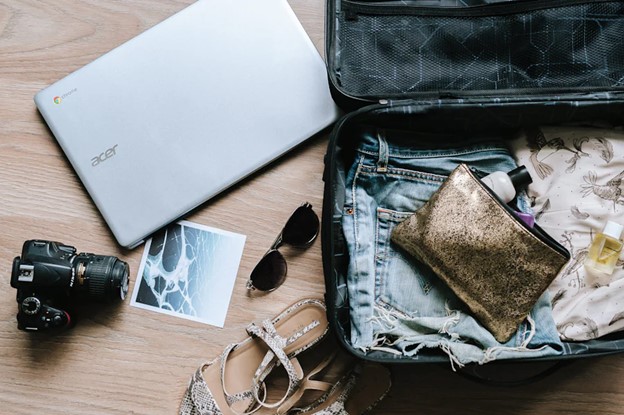
Suitcase size guide
1. Consider Your Travel Duration:
– Short Trips (1-3 Days): Opt for a small carry-on or weekend bag.
– Medium Trips (4-7 Days): Choose a medium-sized suitcase or expandable carry-on.
– Long Trips (7+ Days): Select a large suitcase or checked luggage for ample space.
2. Check Airline Regulations:
– Familiarize yourself with airline size and weight restrictions for carry-on and checked luggage.
– Ensure your suitcase dimensions comply with airline guidelines to avoid additional fees or gate-checking.
3. Choose the Right Size:
– Carry-On Suitcases: Typically range from 18-22 inches in height ( 48 to 56 cm ) , suitable for overhead bins or under-seat storage.
– Medium Suitcases: Range from 23-26 inches ( 60 to 66 cm ) and provide sufficient space for medium-length trips.
– Large Suitcases: Measure 27 inches or larger ( more than 70 cm ) , ideal for extended vacations or travelers with bulky items.
4. Evaluate Capacity and Volume:
– Consider the volume and internal capacity of the suitcase, measured in liters or cubic inches.
– Choose a size that accommodates your packing needs without exceeding weight restrictions.

5. Prioritize Mobility and Maneuverability:
– Opt for suitcases with sturdy wheels, preferably spinner wheels, for 360-degree Mobility.
– Ensure the suitcase has a retractable handle with comfortable grips for easy handling.
6. Assess Weight and Durability:
– Select lightweight suitcases from durable materials like polycarbonate, ABS, or ballistic nylon.
– Avoid heavy suitcases to maximize packing capacity within airline weight limits.
7. Consider Expandability:
– Choose suitcases with expandable features that increase capacity when needed.
– Expandable suitcases offer flexibility when packing extra items or souvenirs acquired during your trip.
8. Check Internal Organization:
– For efficient organization, look for suitcases with interior compartments, pockets, and straps.
– Built-in dividers and compression straps help secure belongings and prevent shifting during transit.
9. Assess Security Features:
– Prioritize suitcases with TSA-approved locks or combination locks for added security.
– Built-in lock systems or external lock attachments deter theft and safeguard belongings.
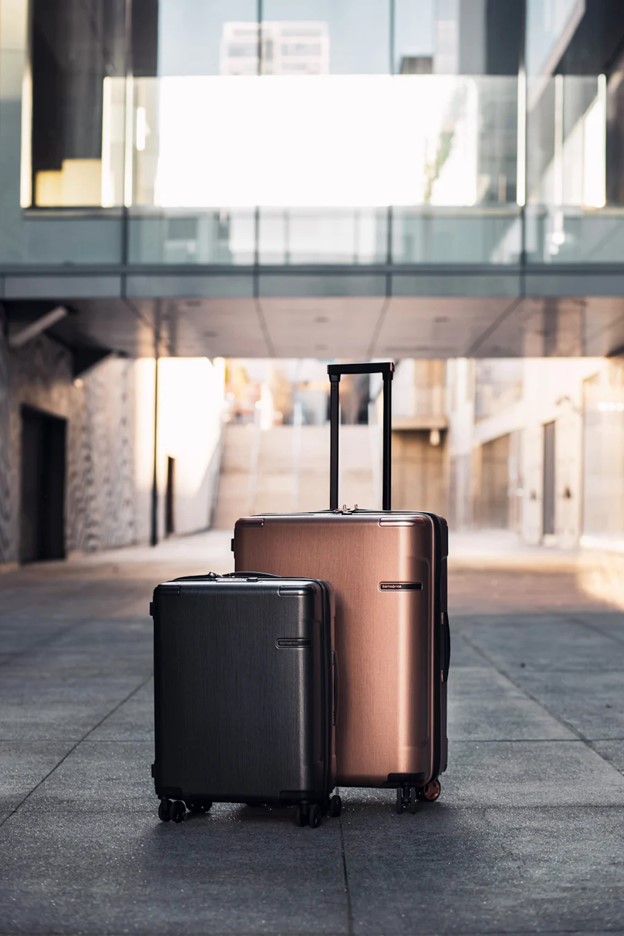
10. Test Maneuverability and Handling:
– Test the maneuverability and handling of the suitcase before purchase.
– Ensure smooth rolling wheels, stable handles, and ergonomic design for comfortable transport.
11. Evaluate Warranty and Customer Reviews:
– Choose suitcases from reputable brands with reliable warranty coverage.
– Read customer reviews and ratings to assess Durability, performance, and overall satisfaction.
12. Consider Storage and Transportation:
– Determine storage space for your suitcase when not in use, considering closet or under-bed storage options.
– Evaluate transportation methods to and from the airport or hotel, ensuring compatibility with your suitcase size and weight.
13. Plan for Future Travel Needs:
– Anticipate future travel plans and select a suitcase size accommodating various destinations and activities.
– Invest in a versatile suitcase that meets your current and future travel needs for long-term use.
Following this suitcase size guide, travelers can make informed decisions when choosing the perfect suitcase for their next adventure. Whether embarking on a short getaway or an extended vacation, selecting the right suitcase size ensures efficient packing, seamless travel, and peace of mind.

Luggage material guide
1. Polycarbonate:
– Pros: Lightweight, durable, and scratch-resistant.
– Cons: It can be more expensive than other materials and may show dents over time.
2. ABS (Acrylonitrile Butadiene Styrene):
– Pros: Affordable, lightweight, and impact-resistant.
– Cons: Less durable than polycarbonate, may show scratches more easily.
3. Nylon:
– Pros: Flexible, water-resistant, and tear-resistant.
– Cons: Less rigid than hard-shell materials, may lack Durability for rough handling.
4. Ballistic Nylon:
– Pros: Extremely durable, resistant to abrasions and tears.
– Cons: Can be heavier than other materials and may be more expensive.
5. Polyester:
– Pros: Lightweight, affordable, and water-resistant.
– Cons: Less durable than nylon or ballistic nylon, may show wear and tear over time.
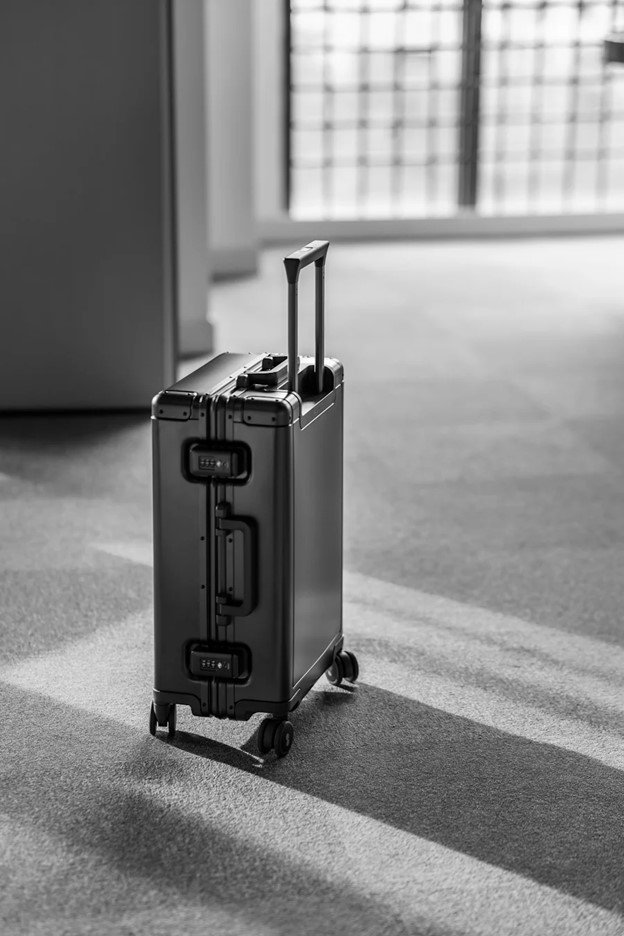
6. Leather:
– Pros: Stylish, luxurious, and durable when well-maintained.
– Cons: Heavier than synthetic materials, requires regular care to maintain appearance.
7. Aluminum:
– Pros: Extremely durable, resistant to scratches and dents.
– Cons: Heavier than other materials, may be more expensive, may show wear over time.
8. Hybrid Materials:
– Pros: Combines the benefits of different materials, such as Durability and flexibility.
– Cons: It may be more expensive, with limited options compared to single-material luggage.
9. Recycled Materials:
– Pros: Environmentally friendly, reduces carbon footprint.
– Cons: Availability and Durability may vary depending on the material used.
10. Carbon Fiber:
– Pros: Lightweight, extremely durable, and resistant to scratches and dents.
– Cons: Expensive, limited availability, may not be as readily repairable as other materials.
When choosing luggage material, consider factors such as Durability, weight, cost, and personal item preferences. Selecting the suitable material ensures that your luggage meets your travel needs and withstands the rigors of your journey.

Maximal weight authorised by airlines
ALWAYS CHECK WITH YOUR AIRLINES AS IT MIGHT DIFFER
For most major airlines, the maximum weight authorized for carry-on baggage is typically around 7-10 kg (15-22 lbs). The maximum size of carry-on luggage is usually around 22 x 14 x 9 inches for a small cabin bag or small suitcase. Different airlines may have varying size limits, so it’s always a good idea to check the airline’s website for accurate information.
When it comes to check-in luggage, the maximum weight allowance can range from 20 kg (44 lbs) to 32 kg (70 lbs) for international flights, but may be lower for domestic flights. The maximum dimensions for checked bags are usually calculated by adding the length, width, and height measurements together (linear inches), with oversized luggage often incurring additional charges.
For international carry-on sizes, airlines like British Airways, American Airlines, Turkish Airlines, Air France, Virgin Atlantic, Aer Lingus, Cathay Pacific, and SAS Plus typically adhere to similar standards, while low-cost carriers and budget airlines may have stricter luggage size restrictions.
Business travelers often prefer carry-on baggage for easy access to valuable items like laptops, mobile phones, and personal belongings, with features of credit cards from various companies sometimes offering benefits like free checked bags or priority boarding.
For those traveling with sports equipment or oversized bags, it’s essential to be aware of airline safety regulations regarding lithium batteries, as well as the policies of baggage handlers and the airline carrier to avoid any issues with oversized luggage.
In general, checking the luggage sizing requirements and regulations of your specific airline before your trip is the best option to ensure a smooth travel experience, especially when choosing between basic economy tickets or standard luggage size limits imposed by the airline industry.
Need some travel inspiration ? Check our travelling quotes HERE
⚠️ Don’t forget our complete guides about many countries in the world ( 5 continents )
✅ What to do cities by cities
✅ Trekking, Yoga, adventure, surf and the best activities
✅ Best food and best cafés
☝🏻 And way more about the world
🔍 Just type the topic / country you choose in the search bar for all our articles
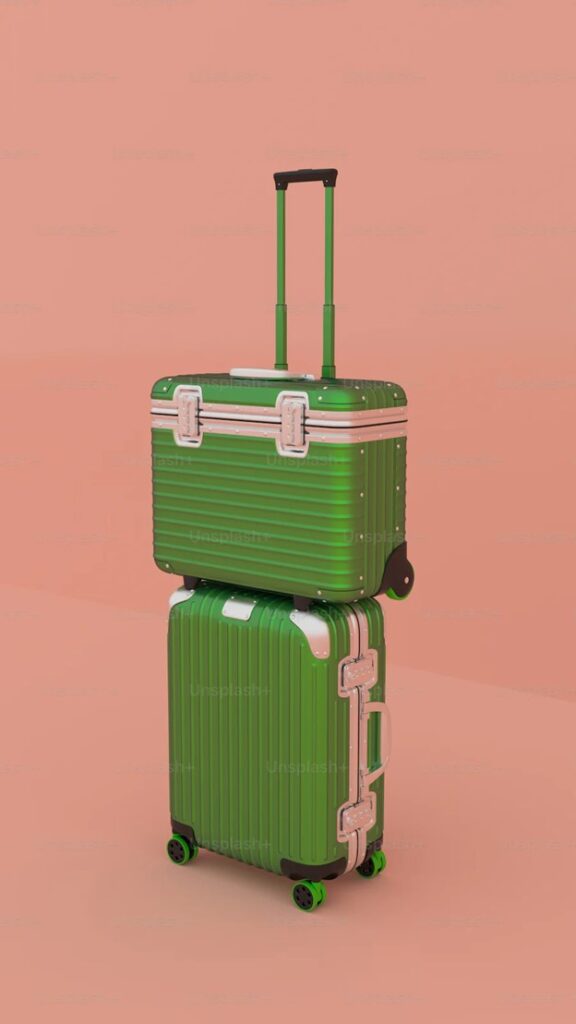
Wrapping up
Selecting the suitable luggage material ensures a smooth and hassle-free travel experience. Whether prioritizing Durability, lightweight construction, or style, each material offers unique advantages and considerations.
From the rugged Durability of polycarbonate to the timeless elegance of leather, travelers can find the perfect balance of functionality and aesthetics to suit their preferences and needs. By understanding the characteristics of different luggage materials and considering factors such as Durability, weight, and cost, travelers can make informed decisions that enhance their journey and provide peace of mind throughout their travels.


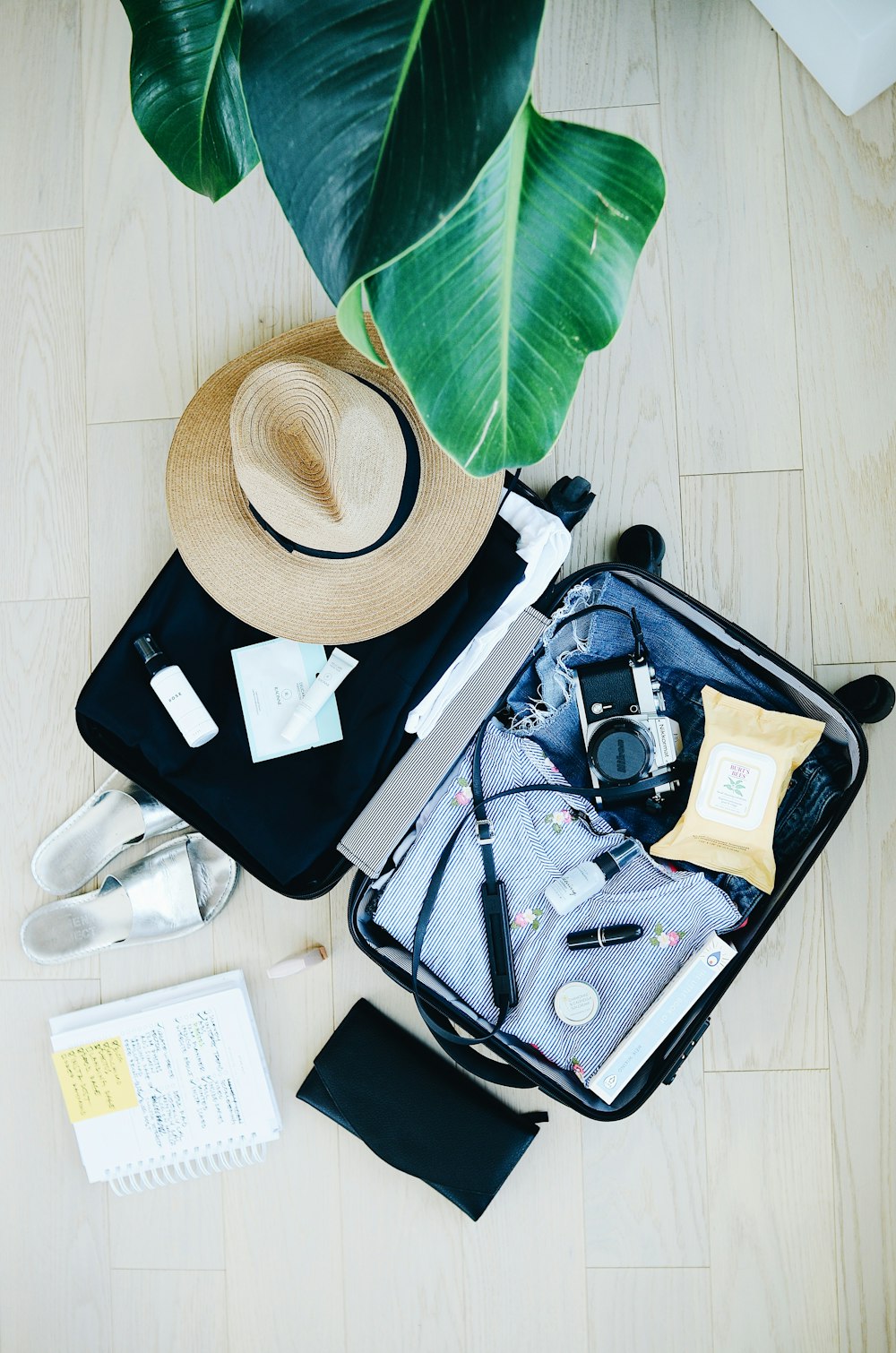
![Best Instant Coffee for Backpacking and Camping [Pro Guide 2025]](https://funkyfreshtravels.com/wp-content/uploads/2024/05/Picture1-21.jpg)
![5 Best Backpacking Tents and Hunting Tents [Pro Guide 2025]](https://funkyfreshtravels.com/wp-content/uploads/2024/05/Picture1-26.jpg)
![Best Brands of Luggage Depending on Your Travel Style [2025]](https://funkyfreshtravels.com/wp-content/uploads/2024/09/premium_photo-1680384692596-9f548ddf3675-768x480.jpg)
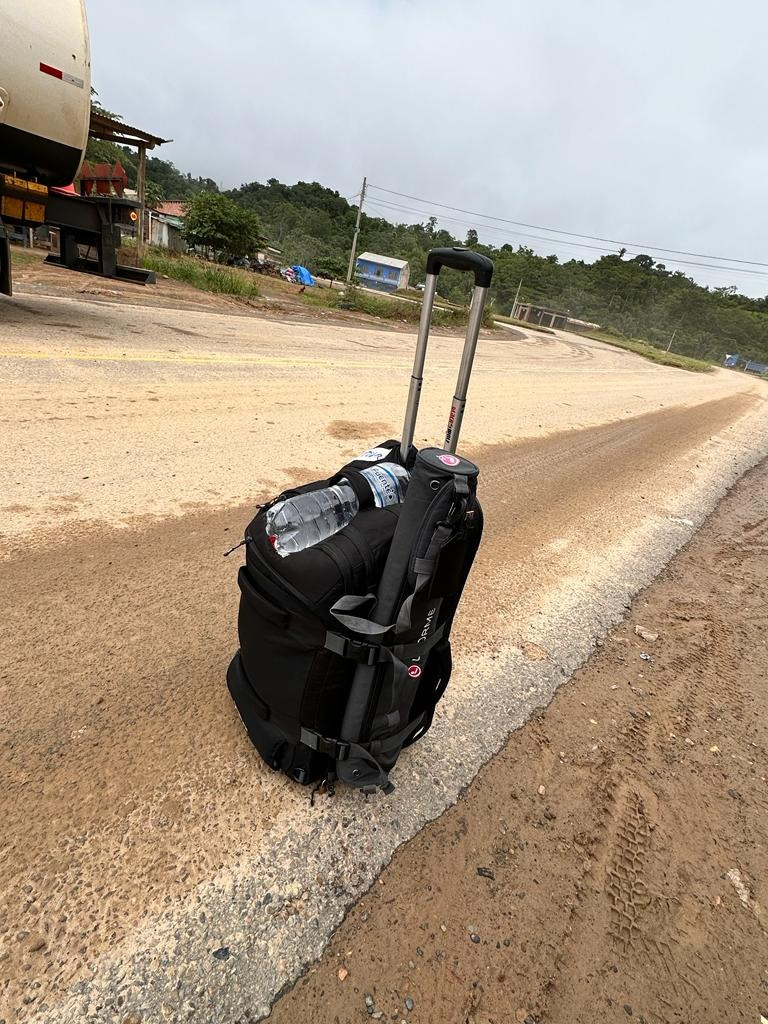
![Can You Take Disposable Vapes on Airplane? [Guide 2025]](https://funkyfreshtravels.com/wp-content/uploads/2024/05/Picture1-23.jpg)
![Best Hatchets & Axes Backpacking and Camping [PRO GUIDE 2025]](https://funkyfreshtravels.com/wp-content/uploads/2024/05/Picture1-25.jpg)